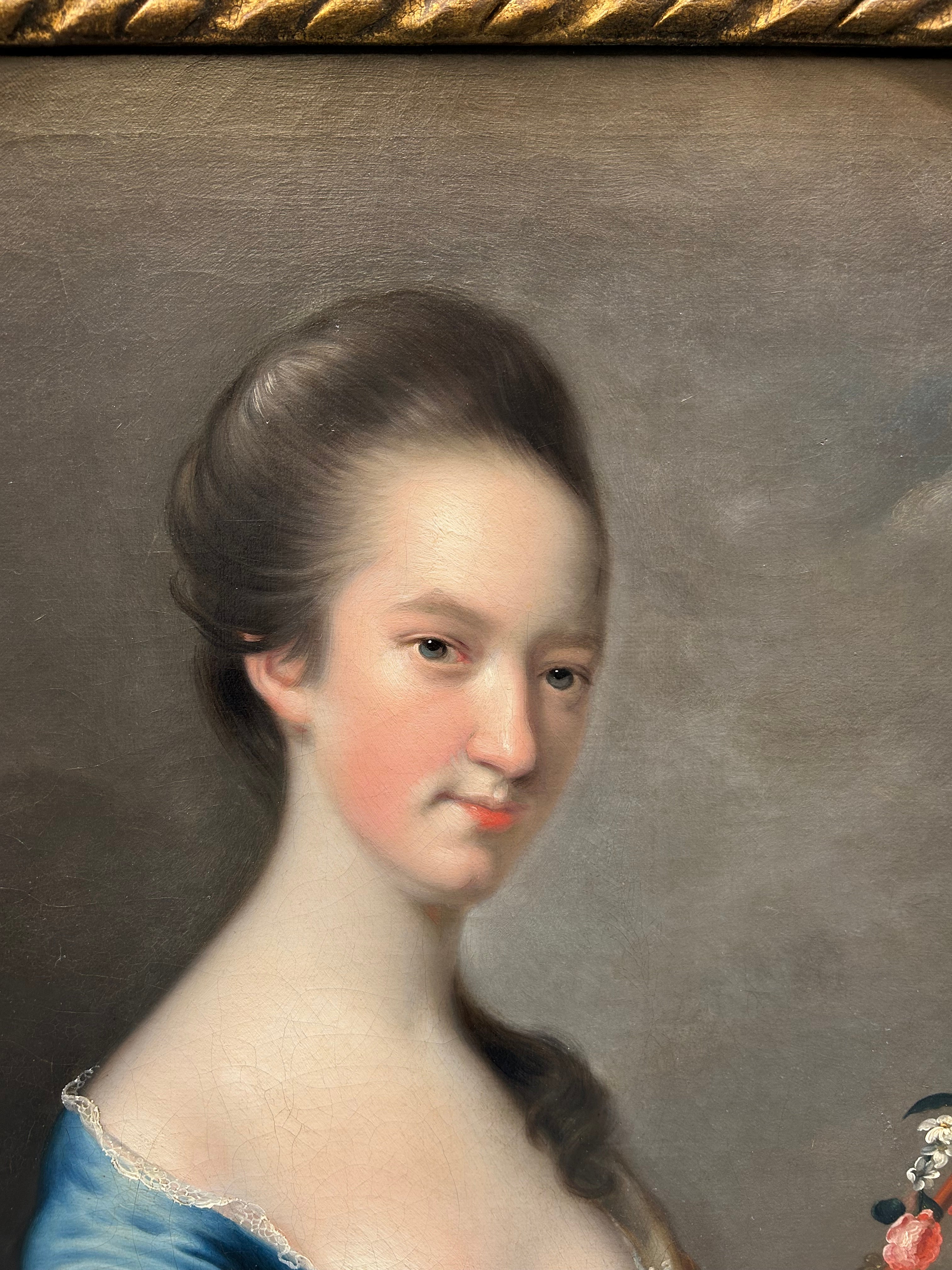

Joseph Wright of Derby
Portrait of a Lady with a Shepherd's Crook
Oil on canvas
Image size: 30 x 25 inches (76 x 63.5 cm)
Original carved gilt frame
Provenance
The Sitter
Family Descent
Christie's, Important Old Master Paintings, 27th January 2000, lot 154
Private Estate
This portrait depicts a lady sporting a fashionable blue and yellow dress as she cradles a blue bonnet and a houlette-style shepherd’s crook adorned with flowers. The shepherdess motif was a popular theme in 17th century portraiture, seeking to associate upper class women with the romanticised characterisation of rural women as humble, modest, and demure.
As is typical of the works of Joseph Wright of Derby, the use of light in this image is striking. Whilst not as marked as his exaggerated tenebrism in the candlelit scenes, Wright evidently has a keen eye for the way that light plays on surfaces such as skin and fabric. The light and shadow of the lady’s face and the slight tilt of her head promote the idea of movement; the shadow of the crook on her bonnet is incredibly accurate; and the shine of the fabric of her dress establishes a true sense of velvety texture. A high level of attention to detail is demonstrated in the rendering of the lace cuffs and sheer sleeves. This portrait also demonstrates Wright’s competency as a portraitist, as he realistically renders the facial features of the lady including her cleft chin, pursed lips, and her snub nose.
It is likely that this image was painted in the 1760s, shortly after Wright had departed the studio of Thomas Hudson. Hudson’s influence on this portrait is undeniable, and Wright’s use of light demonstrates an early mastery that would develop into the tenebrism he is renowned for.
Joseph Wright of Derby
Joseph Wright was born in 1734 in Derby, one of the British centres of the Industrial Revolution - a fact that undoubtedly shaped his subject matters in his career. Wright travelled to London to begin his painting career and studied under acclaimed portraitist Thomas Hudson. He painted portraits in Derby for a while whilst also working as an assistant to Hudson, and began to develop his flair for tenebrism (exaggerated chiaroscuro) which he would later become exceptionally well known for.
After a stint of painting portraits for prominent citizens in Liverpool in the 1770s, Wright set off to Italy with his wife, John Downman and Richard Hurleston. He visited Livorno and Naples and produced a number of paintings during this time. Upon returning to England, Wright tried to establish himself as a portraitist in Bath, but returned to Derby in 1777 due to a lack of patronage. Here, he began to paint portraits of the local gentry to furnish their estate houses.
Back in Derby, Wright befriended leading doctor Erasmus Darwin, who acquainted him with the Lunar Society of Birmingham and, by extension, the Midlands scene of the Enlightenment movement. Some of Wright’s most acclaimed paintings depict scenes from meetings of the Lunar Society of Birmingham, and many of his portraits depict the society’s members. As well as these scientific subjects, Wright often portrayed scenes from industrial life in the Midlands, including portraits of prominent industrialists such as Josiah Wedgwood and Richard Arkwright. His focus on his local area earned him the moniker ‘Joseph Wright of Derby’, and he is credited as being the first major painter with a career outside of London.











